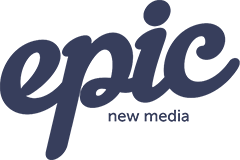Understand SEO (a little) in 6 Questions

SEO, an acronym for Search Engine Optimisation, is one of those things that a lot of people simply can‘t get their heads around and maybe never will.
I thought I would take this opportunity to answer some of the most common questions I see asked online, and hopefully provide the answers to some of those questions as well as providing you with a general understanding of the SEO landscape.
1. What is SEO?
SEO is a process used to enhance the way a website appears in search engines such as Google, Yahoo or Bing by using a number of different techniques with the long-term goal being to attract new visitors to your website for free.
It is, technically, a form of manipulation – but there‘s nothing wrong with it.
To Google, SEO is a process used to make your website easier to index and understand so that they can rank you accordingly in their results. See their SEO Starter Guide.
There are two types of SEO:
– On-Page Optimisation
– Off-page Actions
2. What is On-page Optimisation?
On-page optimisation is the process of changing and optimising various elements or features of your website or its pages in order to better explain the purpose or topic of your content to search engines and thus make it easier for them to decide which keywords your content and pages should be ranking for. Pretty straightforward, right?
For example, if you had written an article about Llamas in Liverpool, the title of your page should be the same or a close variation, as should the H1 tag and URL.
TIP: Don‘t go over the top with this as Google are pretty good at working out what your website and its pages are about, but there‘s no harm in making it easier for them.
3. What is Off-page Optimisation?
Off-page optimisation is the process of attracting links to your website and its pages in order to pass weight and authority to the relevant pages which you would like to rank for – do this by producing brilliant content for your website and others, but not too often.
For example, if you wanted your page about Llamas in Liverpool to rank for Liverpool Llamas, you‘d need links pointing back to that page using descriptive anchor text.
TIP: Don‘t neglect your on-site SEO as that is an extremely important and effective part of the whole search engine optimisation process, more so than you‘d expect.
4. What are backlinks?
Backlinks are links from other websites which are pointing to your website, or vice versa – they‘re considered a vote to Google and will help you to rank
It used to be a case of whoever had the most votes won the rankings war, but that is no longer the case following many algorithm updates. Votes must now be considered relevant and of a certain quality in order to hold any meaningful and lasting value.
TIP: Google will penalise and demote your website in their rankings if you artificially create links or participate in link schemes specifically designed to pass PageRank.
5. What is anchor text?
Anchor text is the piece of text used to name or describe a link to another website, for example ‘click here’ or ‘visit now’ – it is used by Google to better understand the topic or purpose of a linked page and helps to define their rankings.
For example, marty is awesome – That would be a link pointing to our homepage with the anchor text “marty is awesome”.
TIP: Ensure that your link profile contains a large percentage of brand anchors rather than keyword anchors as this can look largely artificial and unnatural. Bad news!
6. What is PageRank?
PageRank is a scoring system (algorithm) which was created by Google to calculate the importance and weight of a specific website or page by counting the number of links pointing at them, as well as their quality, which they would use to determine who deserved to be ranked highly within their results for competitive search terms.
The PageRank of a page can be anything from 0 – 10 with 10 being the highest available and only a handful of websites having ever achieved that lucky (and crazy) feat.
For example, a site with five PR 5 links pointing to it would USUALLY perform better than one with five PR 2 links, although this isn‘t always the case nowadays.
TIP: Don‘t chase PageRank. If you happen to attract links which flow PageRank to your website, great, but if not, don‘t worry about it. Focus on providing value first.
Final Words
Do you understand SEO now? Probably not. But have these simple questions and answers provided you with a little understanding? Hopefully so.
Remember, SEO is a fine art which can provide both significant and positive results when implemented properly. Try to keep up with industry changes and always be aware of Google‘s Webmaster Guidelines to ensure that you‘re doing things the right away and don‘t end up with some sort of penalty for being overly aggressive or spammy.
